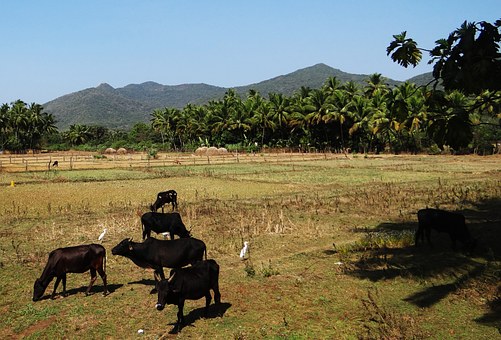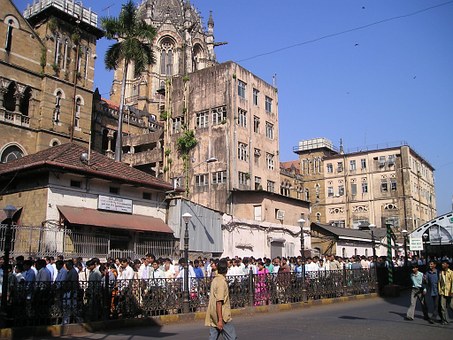Jungle Trip In Ecuador

We hope you enjoy reading about our trip to the jungle.
A 5-6 hour drive from Cuenca to Macas in the jungle is a trip to always be remembered. The scenery is spectacular, and the roads somewhat scary.
Macas, with a population of about 30,000, is the closest major jungle city from Cuenca. There are no flights from Cuenca to Macas, so the only transport is by bus or car. There are flights, however, from Quito.
There are two main routes from Cuenca to Macas. One follows the main river system from Cuenca where three dams for hydro electric power can be seen. These are in the direction of a town called Paute. It is estimated that over 60% of Ecuador's electricity needs are filled by hydro electric power, and this is set to increase ever further. A new $2.0 Billion scheme has just been approved in an area not far from Quito. It is to be 85% financed by China. It will also be constructed by a Chinese corporation. At the moment Ecuador still imports power from Columbia and Peru during the dry seasons. The new project should reverse this trend, and electrical power will be exported from Ecuador. It is also suggested that the Paute plants will also be further upgraded.

The other route to Macas from Cuenca, which is shorter in distance, is via Gualaceo. The time taken to drive this route, however, is still about the same as the first one mentioned, due to the poor condition of the roads. The maximum speed for about 3.5 hours is about 20 mph (30 kph). This route, however, should be upgraded within the next two years and the time taken to drive the distance should be cut substantially. Both routes essentially connect the Pan American highway (#35) to highway #45.
Macas is the capital of the Morona Santiago province and has a population of about 30,000. The town was once known as "Sevilla del Ora" which, when translated, means "Golden Seville". This historical town began its humble beginnings as a Missionary Outpost formed by the Dominican Church shortly after the Spanish conquest in 1533. This thriving centre also became a formidable Spanish trading post during its early stages of its history.
Later Macas became a founding centre of great affluence and prosperity that was created by the surrounding gold mines in this particular area. Unfortunately this came to an abrupt end due to the many violent attacks on the town in conjunction with the mines. In turn, with the mines abandoned for the safety of those inhabiting the area, Macas began to deteriorate.
Today Macas has developed into an important role in the development and commercial sector. It has increased in tourism since the 1998 treaty between Macas and Peru. There are now some fantastic and very high class hosterias around the city. Even with all these developments and advances, the area is still very well protected by the local Shuar and Achuar people. Attempts to ensure the preservation of this natural habitat has seen action taken against companies that wished to take unfair advantage of the virgin lands - such as petroleum companies. Such efforts have brought great advantages to the town and seen to the continued survival of over 400 years of its history.
The area around Macas is littered with many small farms. The vegetation is very lush from the high rainfall (a minimum of 100 inches per year or 2,500mm) and warm temperatures (average of about 72F).
Very close to Macas is the Sangay National Park, which stretches between the Morona Santiago, Chimborazo and Tungurahua provinces. It spans an area of about 517,765 hectares (1,278,880 acres). The park contains two active volcanoes (Tungurahua and Sangay) and ecosystems range from tropical rainforests to glaciers. The Sangay volcano at 5,230 meters or about 17,000 feet, although only the 7th largest, it is Ecuador's most active. It is about a 7-day hike from Macas and on clear days, can be seen from Macas towering over the jungle landscape with a thin whisper of smoke trailing from its picturesque, snow-capped cone. "Sangay" means "Peaceful One" in the native Shuar language - an appropriate name for the passive eruptive quality of one of the most continuously active volcanoes in the world. Residents of the city of Macas are able to enjoy this fearful sight from their city - though they are situated relatively far from it. At night the volcano emits a gentle halo of light as the lava inside the crater continues to bubble at excessive heats.
The Sangay park was listed as a UNESCO World Heritage Site in 1983. In 1992, it was added to the list of World Heritage Sites in danger due to illegal poaching, extensive grazing, unplanned road construction and encroachment of the park's perimeter. However, it was removed from the UNESCO list of endangered sites in 2005.
The National Park is an important refuge for rare species of the Andes, like mountain tapirs and spectacled bears. Especially for the mountain tapir, the park is one of the most important strongholds. Typical species of the alpine and subalpine areas are mountain tapirs, pumas and Andean foxes. In the forests below live spectacled bears, giant otters, jaguars, ozelots, margays, Brazilian tapirs, white-tailed deer, little red brocket deer and Northern Pudus. About 300-400 bird species inhabit the Park.

Very close to Macas and the Sangay National Park is the Upano River, the longest in Ecuador. It is called the "River of the Sacred Waterfalls" because dozens of cataracts plunge from the gorge's walls. Macas is the most popular spot to launch rafting from. Many tour companies offer 4-6 day rafting trips, and come in contact with the fascinating culture of the Shuar Indians. The Upano River flows through the Namangosa Gorge. Flowing through a remote and mostly untouched region of Ecuador, this river truly gives rafters a multi-day wilderness rafting experience, including great hiking, exposure to the Shuar culture, spectacular wildlife viewing, and exciting rapids.
if you like adventure then this is a trip well worth doing.
Chao
by: Dixie Davey Windy City Hotel Bargains Your Entry To Uncovering Beautiful Tourist Spots And Experiencing Terrific Remote Holiday Location - The Temple Of Edfu You Can Be Confident and Visit France, Everyone's Second Country Luxury Travel Club: Top Questions About Luxury Travel Clubs Tips to Improve Online Sales on Holiday season Thailand Air Travel Shouldn't Be Out Of Range Peruse These Clues On How To Score Super Discounts Tha Is it the Stop for Jessica Biel and Justin Timberlake Dreaming Of A Carefree Grand Cayman Trip? Use These Tips To Locate Great Prices Grand Cayman Motels Make Gift Giving Easy with Holiday Gift Baskets Experience The Premium And Popular Leisure Trips Places And Landmarks Within Our World Great Ideas For Kid's Summer Camps Flight Information Relative To Treats & Comfortable Trips For Amsterdam Flights Top Christmas Gifts and Presents for 2010